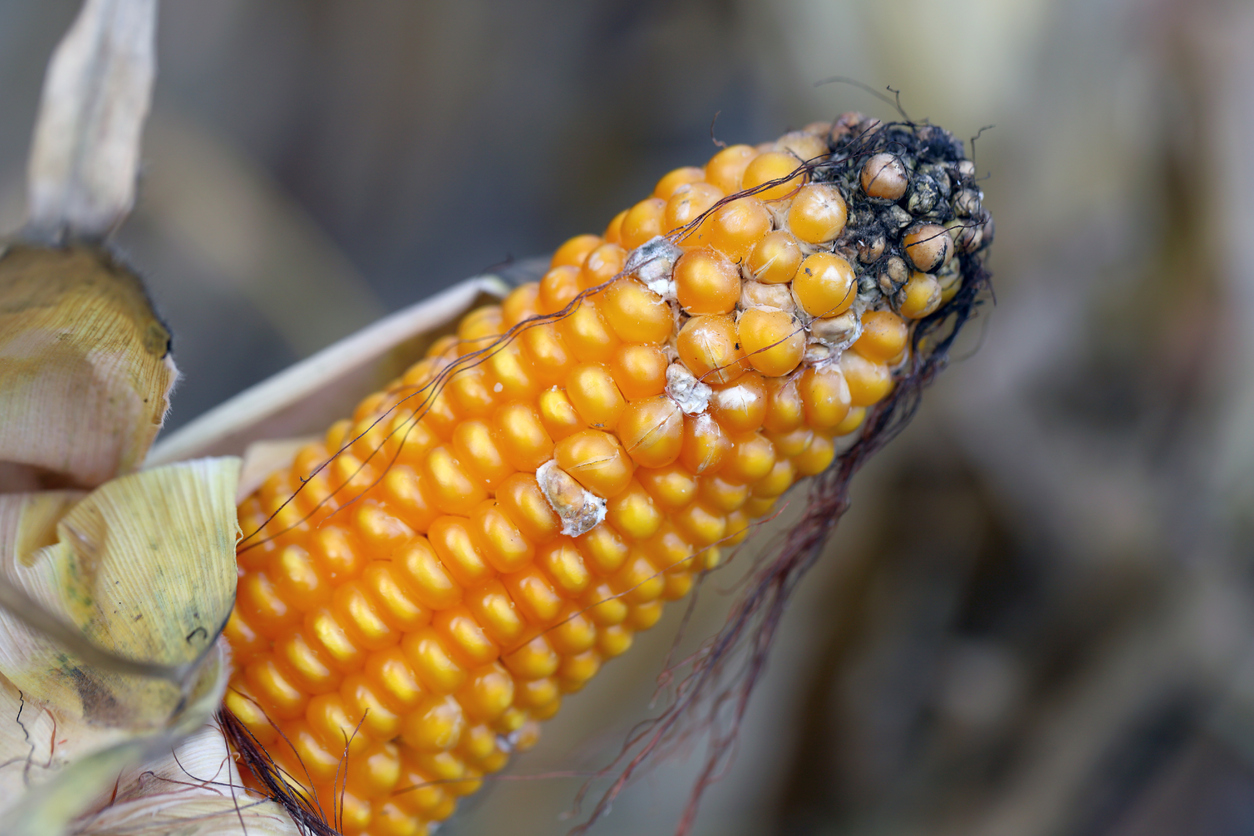The early fall months are upon us, signaling that it’s time to evaluate fields for stalk and ear rots symptoms that may have developed during the growing season .
Not only does this important step determine the harvest order of corn and other crops, but it also mitigates the risk of mycotoxin contamination. With drought and flooding impacting many areas of the U.S. this year, many crops have seen a drop in stalk integrity, where stalk tissue becomes compromised and prone to lodging beneath the main ear.
Identifying ear and stalk rots is a critical part of the harvest season and future field health — checking for each has its own unique process.
A Plant-level Look at Stalk and Ear Rots
Corn stalk and ear rots occur when corn becomes stressed, and the plant is stripped of photosynthetic leaf area, either because of a pathogen or due to environmental strain like a flood or hot, dry conditions.
The result? The plant redirects carbohydrates up the stalk and into the developing kernels, often causing deterioration to the stalk’s integrity and strength. The resulting weakness can also make the corn plant more susceptible to pathogens. Growers with high kernel field demand within large crops are at particular risk.
Identifying Stalk and Ear Rots in Corn
There are a plethora of pathogens that can cause stalk rot, Charcoal, and Gibberella, among the many that Purdue University has diagrammed in detail.
Identifying stalk rot sometimes requires a lab diagnosis, but other times, it can be found with the naked eye. Start by identifying 20 plants in five fields at random — it’s time for a push and pinch test. In a pinch test, the stalk is squeezed near the lowest two internodes. If it collapses, it is compromised. In a push test, the stalk is bent to a 30-degree angle — plants that snap back into place pass the test, and those that don’t fail. If more than 10% of stalks fail either test, consider that field for early corn harvest .
When it comes to evaluating ear rot, a number of pathogens can spur a mycotoxin risk in corn. If a field shows signs of the disease, significant testing must be done. Harvest management that addresses ear rot includes early detection efforts, rapid drying grain to 15% moisture, and storing the grain in conditions that will limit mycotoxin exposure and build-up.
Whether it’s an easy or complex corn harvest this year, John Deere has the tools and harvesting equipment to handle it. Contact your local John Deere dealer for more information and assistance.
